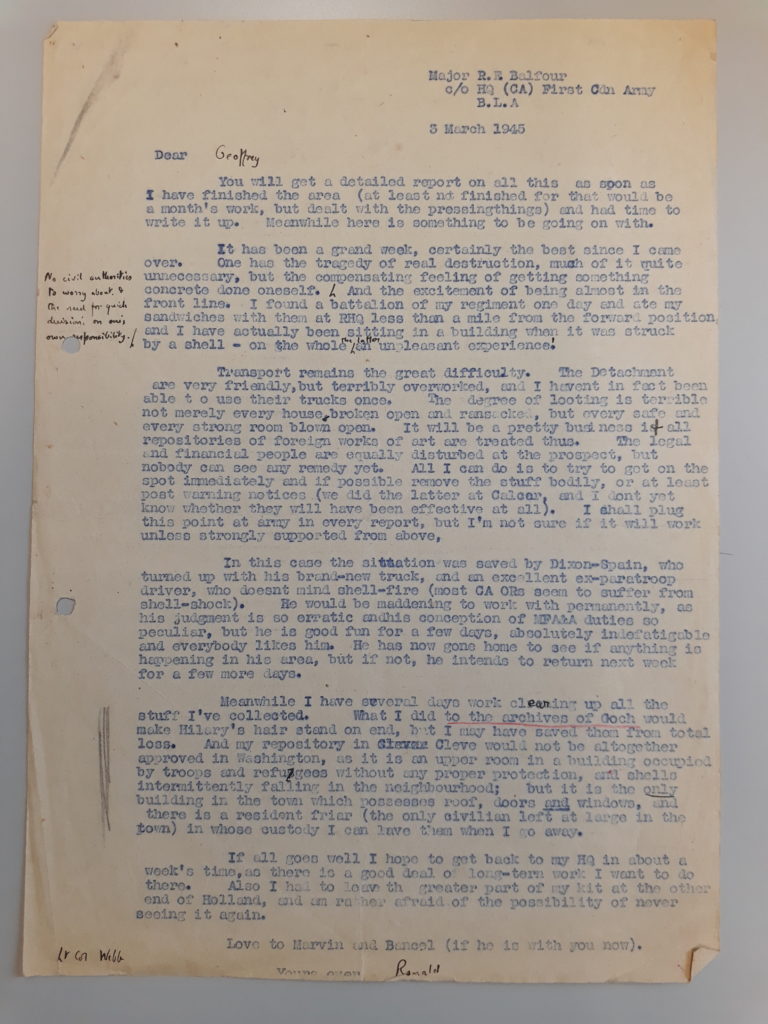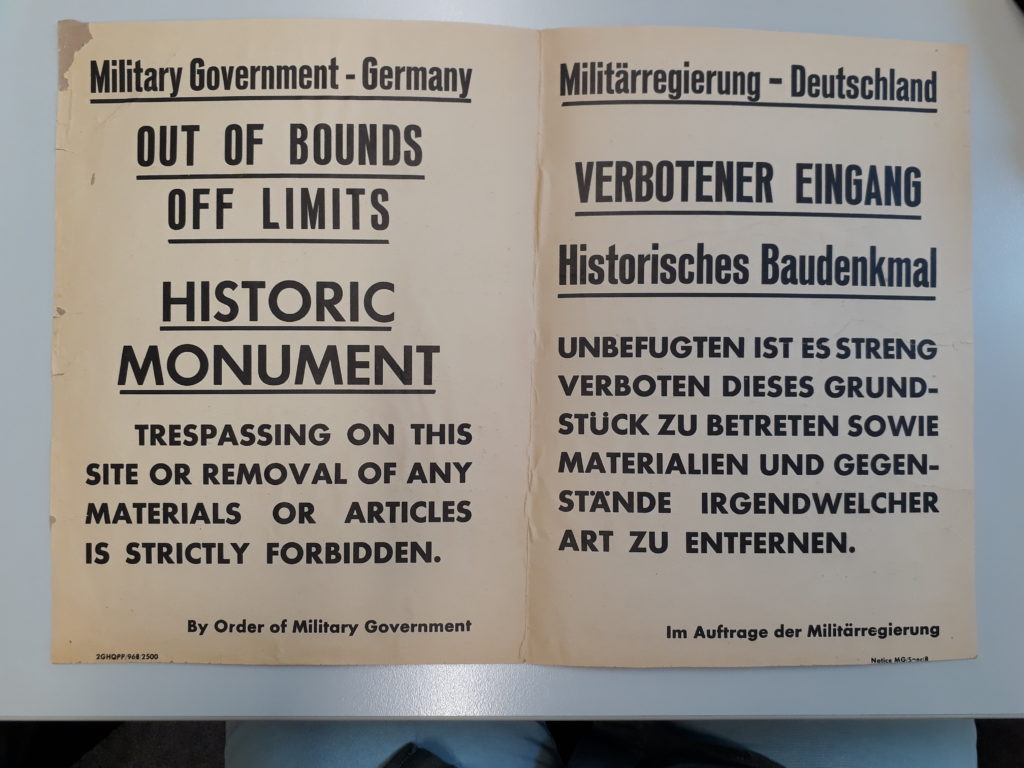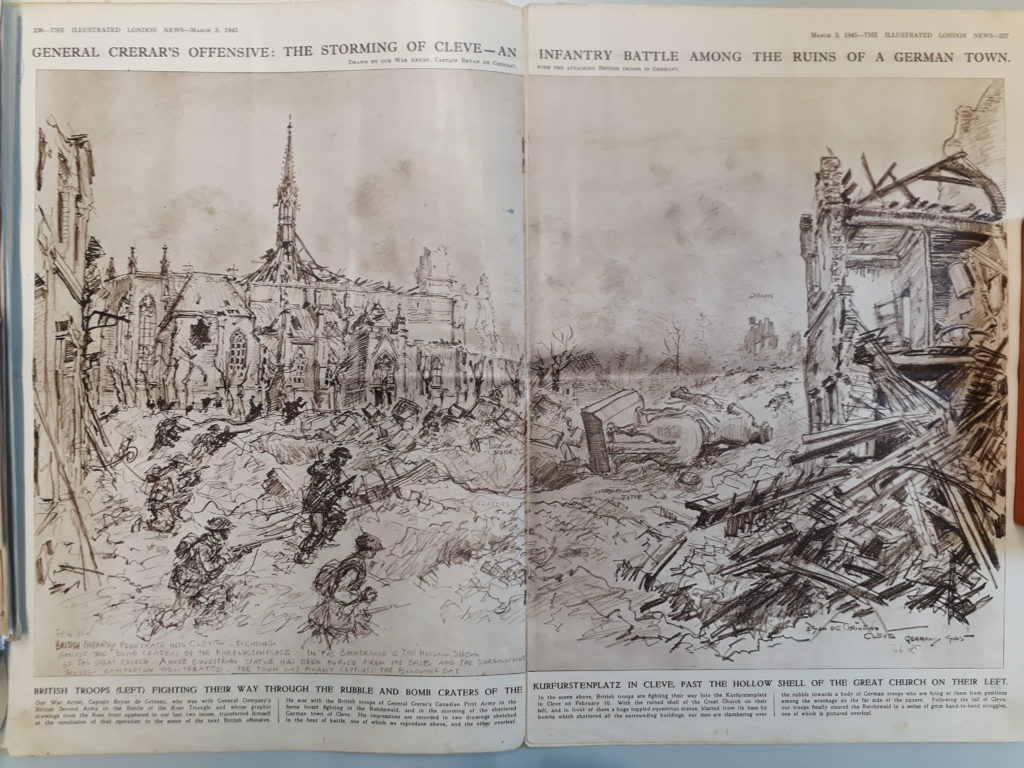- Grunewaldstraße, 47533 Kleve, Germany
The Reichswald Forest War Cemetery holds the grave of art protection officer Ronald Balfour. In 1944, the historian from the University of Cambridge joined the Monuments Fine Arts and Archives Section, known as the ‘Monuments Men’. As a specialised officer, he followed the front line in Western Europe, where he protected historically significant art objects from destruction.
Ronald Balfour was a member of the Monuments Fine Arts and Archives Section (MFAA) and a specialised officer of the Canadian 1st Army. In the wake of Operation Veritable, which started on 8 February 1945, he arrived in the Lower Rhine Region. He set up his headquarters in the Capuchin monastery in Spyck.
Kleve and Goch were liberated on 11 February and 20 February, respectively. Balfour immediately visited the sites to protect historically significant buildings, art objects and documents from destruction and looting. Although bombs had completely destroyed the collegiate church of Kleve, he managed to salvage parts of two large 16th century wood carved altarpieces and move them to safety. In Goch, he found the city archives in a building that had already been partly plundered. He collected the remainder and brought it to Kleve. One of Balfour’s great merits was the preservation of the Gochse Steintor, a monumental gateway and part of the medieval city fortress.
The chaos of those days in the destroyed city of Kleve, is evident from the fact that the exact date of Ronald Balfour’s death and the circumstances under which he died are unknown. Balfour’s documents dated 3 March are his last sign of life. His parents were informed that 4 March 1945 is the day of his death. According to his grave on the military cemetery in the Reichswald Forest Balfour died on 10 March. It is assumed that Balfour was killed by shrapnel on the station square in Kleve.
In his short service in the MFAA, Balfour managed to secure many art treasures. Kleve and Goch are still incredibly grateful and pay homage with a street name and this audio exhibit.




